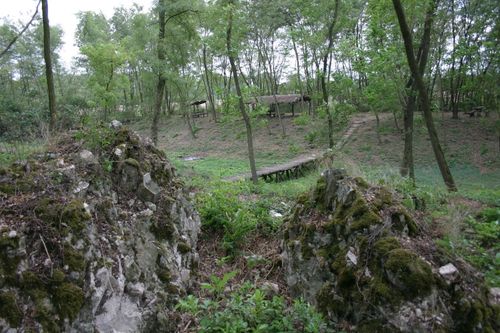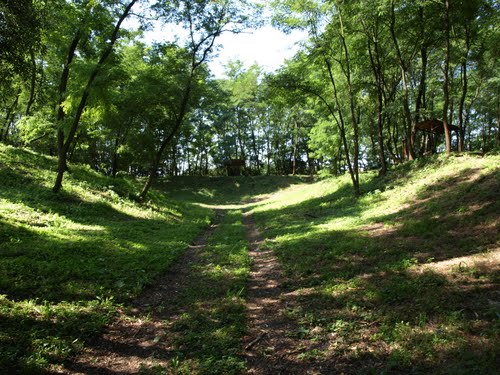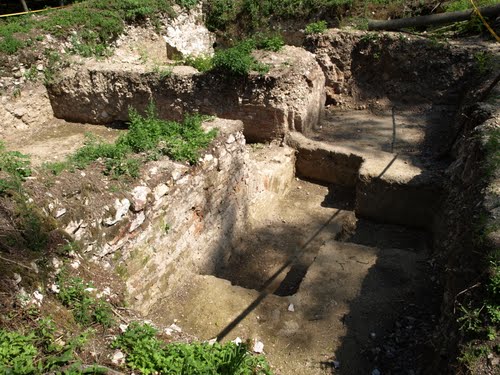The Budy Fortress, built in the 13th or 16th century and becoming ruined in the Middle Ages, is organically related to the history of Vamosatya Village.
It is situated 1 kilometre far from the settlement. The first written mentioning of the fortress dates back to 1524. In 1563 the castle fortified and surrounded with a moat by Bailiff Budy was occupied by the Turkish. In 1564 Istvan Bathori recaptured it after a siege, unfortunately, the traces of the successful cannonade can still be seen. In the early 17th century the Budys died out, so the fortress passed through the hands of several smallholders, and then the desolated building started to perish.
One of the main characteristics of this fortress is that it was built in the middle of the plain, in the area protected by the marshes of the water of the Micz and Csaronda Creeks. Two trenches were dug around the stone establishment. The external trench was a moat, while the internal one was dry.
Approaching Vamosatya from Gelenes, close to the village, left to the road lie the remnants of the fortress. It takes about 30 minutes to reach the fortress son foot from the public road, partly across the plough-land. In the acacia grove the Fortress, covered with its broken stones and thus preserved for the succeeding generations, built from natural stones, is clearly visible in the middle of the external moat, the 3-5-meter wide entrenchment and the internal dry trench.
Inside the Fortress, a 30x30 meter stone fortification, having a regular squared basic area, used to stand from the 13th to the 15th century. The building protected by its four corners with a circle-shaped corner turret could serve the frequently changing medieval owners rather as a residential fortress, a fortified castle. Owing to its small basic area, it probably used to have several storeys. The external castle wall was made of mortar-bedded stones of 1-2 metres wide, while inside 0.5-1 meter thick walls divided the basic area into several pieces.
One could get into the Fortress on a drawbridge. The portico protruding on the north-eastern side was the entrance. In the wall opposite the Fortress entrance, a regular well-shaped storer was uncovered in the 1960s. In the middle of the south-western wall, the remnants of a sooty chimney can be seen.
Having been destroyed and rebuilt several times, the Fortress, according to the written memories, underwent its last considerable siege in the Age of King Zsigmond Janos, in 1564. When Munkachevo fell, the retreating Turkish-Tartar Army occupied not only the village but the Fortress, too.
The Fortress could be reoccupied with cannonade. By today, unfortunately, the Fortress has been overgrown with weeds. The internal fortress has become even with the ground level. The internal ditch, entrenchment and 3-5-meter deep moat surrounding the Fortress protected this important historic monument from agricultural cultivation. On the Hungarian Bereg plain no other stone fortresses can be seen.
The clearing of the fortress and its environs and its transformation into a tourist spot has started. This is the first step of exploration, presentation. After the static surveys and archaeological excavations, we plan to partly or entirely renovate the fortress and establish a museum by using the findings. All visitors are welcome to this village to see other places of interest, too, as long as the works are completed. In memory of the battles, arching shows and fortress plays are organised regularly.






